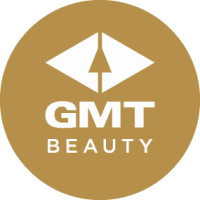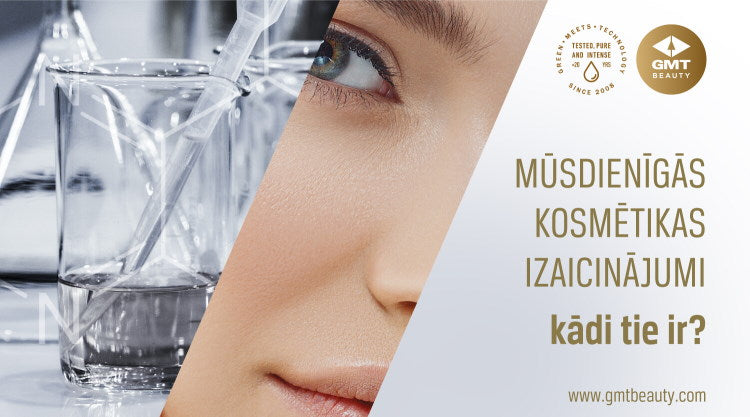Every day, any person uses cosmetics, the number of which varies from a few to very many, depending on age and gender. Are our benefits from using it really only positive? Will a recognizable brand always be "friendly" to our skin? What role does packaging play in cosmetics? These and other questions are answered by Jānis Graudiņš, head of cosmetics production of the Latvian cosmetics brand GMT BEAUTY.
What is allowed and what is forbidden, or the "smart" choice of the buyer
The European Union (EU) has legislation that monitors and regulates the circulation of cosmetics. Prohibited raw materials that must not be used in cosmetics are precisely defined. However, there are several permitted substances that are not so "innocent" and should not be present in modern cosmetics of the 21st century.
The current system in Europe does not ensure that the market is fully protected from low-quality and sometimes even dangerous cosmetics entering the market. Therefore, this responsibility rests on the shoulders of the buyer himself - for where and what he buys.
What is allowed is harmful
The chemicals used in cosmetics are being studied more and more, and the results of these studies are not very encouraging. Conventional cosmetic products contain more than 1,000 permitted substances, which also turn out to be harmful. When they are used for a long time, "accumulations" are formed in the body and reproductive health is affected, hormonal changes are caused in the body, developmental disorders and other health hazards.
We have heard that parabens, silicones, Sodium Lauryl Sulfate (SLS), polyethylene glycols (PEG), chlorine compounds and other substances are dangerous to health, but these ingredients are not prohibited by law in cosmetics. Although modern methods - biotechnology, fermentation and others - have found new, natural, body- and environment-friendly substitutes for practically all chemical raw materials, the well-known and large companies in the traditional cosmetics industry continue to widely use these outdated, unfriendly raw materials. The production of traditional cosmetics is economically beneficial - the raw materials of chemical processing are cheap, the technological process is simple, and the production methods are "developed". And by using the old, familiar raw materials, the "uneducated" customer is given what he wants, the feelings he has been used to for decades. Unfortunately, these product formulations are outdated.
Challenges of modern cosmetics
Cosmetic users will soon receive news - the presence of microplastics in cosmetics will be banned in the EU. Until now, it was the main base of traditional cosmetics, so it must be understood that when the base of the product changes, the cosmetics will also change. The more qualitative and natural the cosmetics will be, the more it will differ from the usual, classic cosmetics based on the processing of petroleum products. Cosmetics will become cleaner. You cannot rely only on a good visual appearance and consistency, it can be misleading.
"GMT BEAUTY brand specialists are constantly working on new technological solutions. Right now, the composition of our cosmetics is 99% natural, and from 2022 it will be 100% natural, which, of course, is technically a huge challenge. However, GMT has always been a "pioneer" in the field of cosmetics production, using the latest technologies, creating products with stable and lasting quality. GMT uses only natural preservatives. GMT was the first to start producing “cosmetics of the future” with peptides, the latest biosynthesized substances, where small and highly active particles of a certain substance are obtained at the molecular level. Therefore, it is possible to act on a certain problem much more precisely, to dose active substances more precisely, obtaining a better and more lasting result in a shorter period of time. GMT was the first to use airless cosmetic packaging, which allows for better product preservation, prevents bacteria from entering it, and ensures accurate dosing. Most likely, we will be the first in Latvia to completely switch to natural cosmetic base makers." says Jānis Graudiņš.
A positive alternative or “miracles” of science
Science introduces new "miracles" every moment, but GMT BEAUTY uses only proven natural active substances in its products, which are scientifically formulated and clinically tested. Many of them resemble science fiction! Among them, you can find plants that act similar to Botox , raw materials that are a natural alternative to fillers , and even a substance that can "enlarge" breasts .
The little "tip" will be useful here, where you will find the "unfriendly raw materials" most often found in cosmetics and alternatives offered by natural cosmetics manufacturers.
Microplastics – Acrylates, Alkyl Acrylate Crosspolymer, Acrylate Crosspolymer, Acrylate Polymer, etc
The natural product base uses hydrogenated oils, polysaccharides, natural resins, etc. Caesalpinia Spinosa Gum, Xanthan Gum, Hydrogenated Lecithin, C12‑16 Alcohols, Lysolecithin, Sclerotium Gum, Glyceryl Oleate, Polyglyceryl-3-polyricinoleate and other natural raw materials will increasingly be seen in cosmetic products in the compositions.
Mineral oil (a by-product of crude oil processing) cosmetics , which contain Paraffinum Liquidum, Vaseline, Ceresin, Petrolatum, Mineral oil, Cyclomethicone, Siloxane, Cyclomethicone, Dimethicone, can interfere with the supply of oxygen to the skin.
Natural cosmetics use all kinds of vegetable oils (Helianthus Annuus Oil, Triticum Vulgare Germ Oil, Prunus Amygdalus Dulcis Oil, etc.), butter (Shea Butter, Theobroma Cacao, etc.), hydrogenated oils (Coco Caprylate/Caprate, Hydrogenated Ethylhexyl Olivate, Hydrogenated Olive Oil Unsaponifiables , Triheptanoin, etc. c).
Most traditional cosmetics contain artificial, chemically synthesized emulsifiers - PEG derivatives in various variations (Poly-Ethylen-Glykole), Polyethyleneglyko, butylhydroxytoluene (BHT), BHA, etc. c, which may be harmful to the environment and human health. They are carcinogenic.
Natural emulsifiers are Cetearyl Alcohol, Caprylyl/Capryl Glucoside, Polyglyceryl-10 Laurate, Babassu Oil Polyglyceryl-4 Esters, Glyceryl Stearate, C15-19 Alkane (Plant-based & Renewable), Coco-Caprylate/Caprate, Polyglyceryl-6 Palmitate/Succinate etc
Detergents – Sodium Laureth Sulfate (SLES), (SLS), Ammonium Lauryl Sulfate – adversely affect the skin and hair .
Natural, gentle cleansing agents include Decyl Glucoside, Sodium Lauroyl Sarcosinate, Coco Glucoside, etc.
Synthetic preservatives – Methylisothiazolinone, Methylchloroisothiazolinone, Methylparaben etc. –paraben, Chloroacetamide, Chlorphenensin etc.
Natural preservatives – Benzyl Alcohol, Benzoic Acid, Sorbic Acid, Potassum Sorbate, Citric Acid, Cymbopogon Flexuosus Herb Oil, Tocopherol, etc.
Price and quality
Price does not always correlate with quality and efficiency. First, the price of the product is determined by the market, secondly, the final price is formed by the operation of a whole "chain" until the cosmetics reach the store shelves, and for each of them, of course, you have to pay.
Most likely, cosmetics for a few euros will not contain high-quality, high-quality raw materials in the required quantity, and therefore the product will be insufficiently effective. Even very expensive cosmetics from a world-renowned brand may not deliver as expected. It should be understood that the buyer then pays a significant amount for the famous brand, and often the eye-catching packaging is more expensive than the product itself.
The market offer at the moment is so wide that you can get lost in the maze of cosmetics, so firstly, read the composition on the labels, secondly, choose a professional-class cosmetic brand that is used by certified specialists and doctors in the cosmetic industry, thirdly, ask for advice from our GMT BEAUTY specialists, who will find the most appropriate cosmetic products for you!
 Log in
Log in

